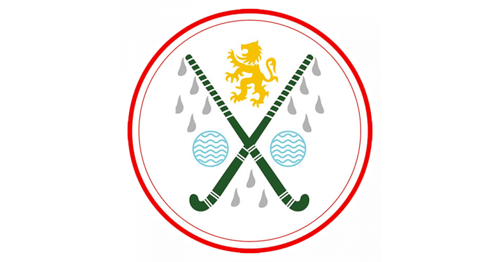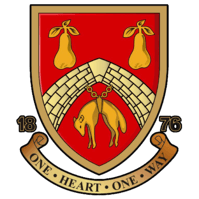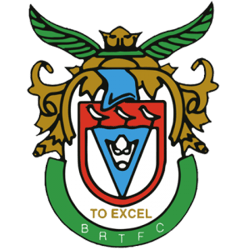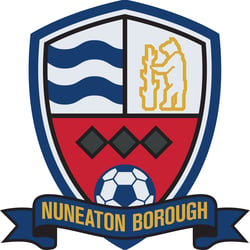Newly formed club looking to come up with a new logo? Or perhaps you want to refresh your current logo to mark the start of a new decade? Learn how to nail your sports club's logo with our 9 top tips.
Before we get into the top tips, it is essential to have a good understanding of the importance of a logo, and what it represents.
A logo is the key identifier of your sports club. Appearing everywhere from league tables to social media and even on people's skin in the form of a tattoo, a logo can evoke several powerful emotions. It creates a sense of unity, whilst also communicating your club's key message and influencing public perception. This makes your logo the most important branding decision your club will have to make.
1) Make It Professional
With an abundance of logo design options available, it is important that you have your logo designed professionally. An unprofessional logo can portray your club in a negative light- unless you are a professional graphic designer, creating a logo yourself is likely a bad choice. Instead, take the time to browse Google for a reputable logo design company or use a site such as Upwork or Fiverr to hire a freelance graphic designer to do the job for you. Of course, there will be a one-off cost attached to this, but this will likely be a long term investment as your logo should have a lifespan of multiple years.

2) Make It Timeless
Following on from the notion that your logo should have a lifespan of several years, it is imperative that your logo is timeless. This means that your logo will make sense beyond the present day and is not time specific. However, this does not mean that your club crest cannot make reference to the past (more on that later though). In order to become instantly recognisable and synonymous with your sports club, you cannot frequently change logos without the risk of confusing fans or losing a sense of identity. Additionally, from a practical standpoint, changing logos is costly and can be logistically complex. The England national team for instance, has had the same logo since 1872 when it was first used.

3) Be Sport Specific
Whilst not essential, it can be a good idea to incorporate the sport that your club plays into your logo. Play lacrosse? Consider featuring a couple of lacrosse sticks in the design. For potential members that do not know the nature of your club, this makes the sport played easily identifiable.

4) Use A Unique Design
Having a unique club badge is highly important. Work together with the designer to establish some original, creative ideas before starting the task. If your logo is not unique, it will not stand out or be memorable. By all means, look to other teams for inspiration, but do not copy their ideas. Make it your own!

5) Include A Motto
Adding a motto or slogan can be a great way to let people know what your club is all about in a short, succinct way. Your slogan doesn't necessarily have to describe your club in black and white, but it should cover the core value or mission of the club. Many clubs opt for a latin phrase on their crests, to add a sense of tradition and sophistication. Everton Football Club for instance use 'Nil satis nisi optimum', which translates to 'nothing but the best is good enough'.

6) Choose A Good Colour Scheme
Using an appropriate colour scheme for your logo is vital as it is one of the most important aspects of the design. Typically, the colour scheme should match the colours that are inherent to the club. If you are a new team starting out and do not have a kit designed yet, try to opt for colours that will flow and compliment each other. Colour is an element that can strongly affect how people perceive your sports club. Try to also consider how the colours of the logo will look, when used on merchandise or various physical placements, in addition to online usage.

7) Reference Local Culture And/Or History
Making reference to your club's local area can be an excellent addition to your club badge. Including a famous local landmark, or referring to an industry which the region is well known for are great ideas and can be efficient ways to communicate a powerful message or story. Sheffield United for example, nicknamed 'The Blades', pay homage to the steel industry which Sheffield is famous for, by including two blades on their club crest. Sunderland AFC meanwhile, feature two local landmarks (a bridge and a monument) and a mining wheel, paying tribute to the City's now extinct mining industry.

8) Include The Name
Whilst this may seem obvious, you'd be surprised at how many clubs do not include the club name on their logo. Without a name, there is no way to identify the club. The positioning and typeface of the name is also often overlooked. Keeping the name central is best, and using an easy to read font style and colour that compliment the overall look and feel of the logo are also key. For instance, if you are going for a modern style logo, avoid using a gothic typeface.

9) Feature An Animal
Many clubs feature an animal or mascot on their logo because they have character traits which can be used to convey your club's message to its audience. For instance Leicester City feature a fox on their logo to mirror their message that 'Foxes never quit'. If your team name includes an animal, e.g Sale Sharks, then it goes without saying that you should incorporate this heavily into the design. Club nicknames are often based around the animals used on the logo, so this is also something to consider if you are choosing an animal or creating a mascot for the first time. Take Manchester United for example, they have always featured a red devil on their club badge and their nickname is the 'red devils'.

Examples Of Good Pitchero Logos
With a vast array of logo styles used by clubs on our platform, we've picked out a few of our favourites below, ranging from traditional crests to minimalist modern designs.
.png?width=600&name=Untitled%20design%20(8).png)
Further Useful Information
How much should I pay for a logo?
Whilst there are plenty of free logo design sites on Google with customisable templates, it is advisable to hire a professional designer who can create a truly unique, bespoke design. Prices vary massively, ranging from £20 to £100 per hour for a designer, or upwards of £500 if using a professional design agency. You can also crowd source your logo using sites such as Design Crowd whereby several people will complete your design request and you then pay for your favourite design. However much you choose to spend, ensure you have a clear budget in mind and do not stray from this. Remember- a cheaply made logo can have a negative impact.
What file formats do I need?
So that your logo can be used on a variety of placements it is important that it is supplied by your designer in a variety of formats. The main formats required will be:
- Vector (AI, EPS or PDF) so it can be increased to any size without loss of quality
- Single Colour Black & White (SVG) so it can be used for printing on merchandise
- Full Colour (JPEG & PNG). JPEG allows for a small file size without loss of quality, whilst a PNG allows for a transparent background so the logo can be used on a coloured background
Changing a current logo
If you are thinking of changing your clubs current logo, it is important to get feedback from your club members and fans. First and foremost, you need to establish if changing the logo is a popular option. Many people resist change, especially if the logo is steeped in history. If the consensus is that changing the logo is a good idea, then there are a few things you can do to ensure that it is a positive change.
1) Try taking suggestions at committee meetings or on social media prior to creating the potential new designs, to see what the majority would like to see included in the new logo. Brainstorm the best way to incorporate these ideas.
2) Once some potential new logos have been designed, hold a club wide vote either in the club house or online to get feedback and a general consensus. If there is an overwhelmingly negative response to your new designs, you should re-think it.
Whilst our top tips outlined in this post are not mutually exclusive, it is worth noting that not all of the tips need to be implemented in order to create an excellent logo for your sports club. The key to great logo design lies in a professional appearance and powerful message.
